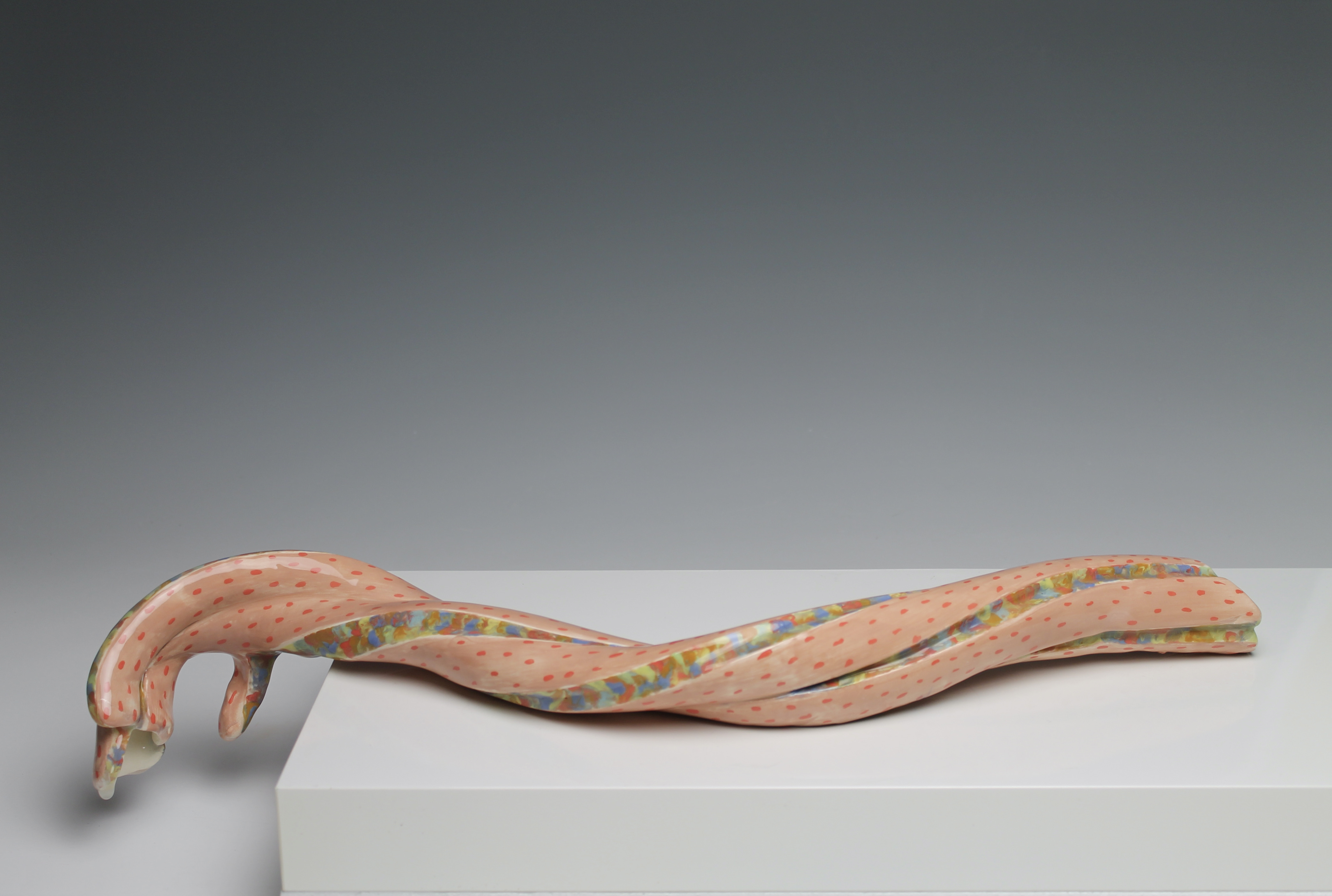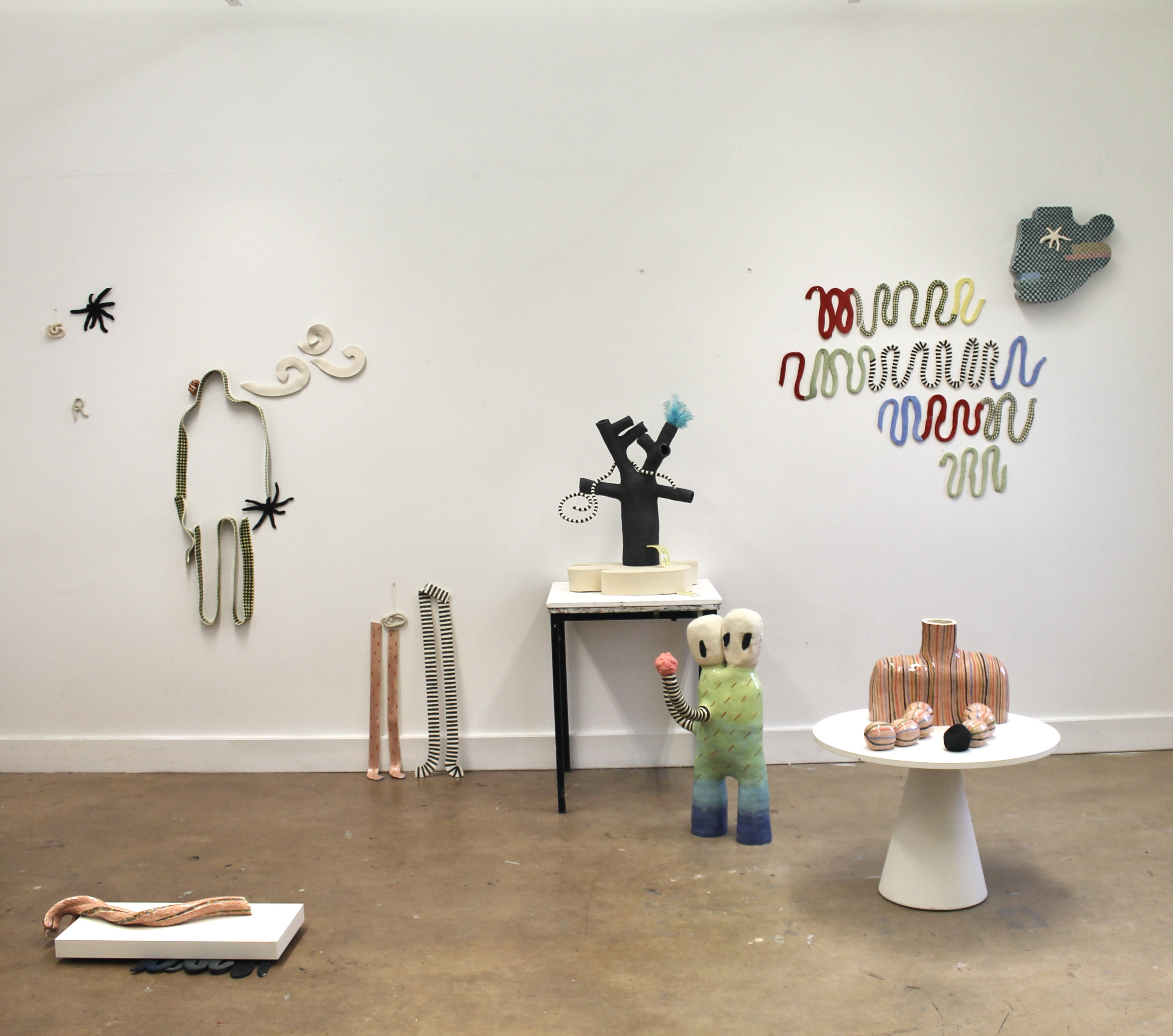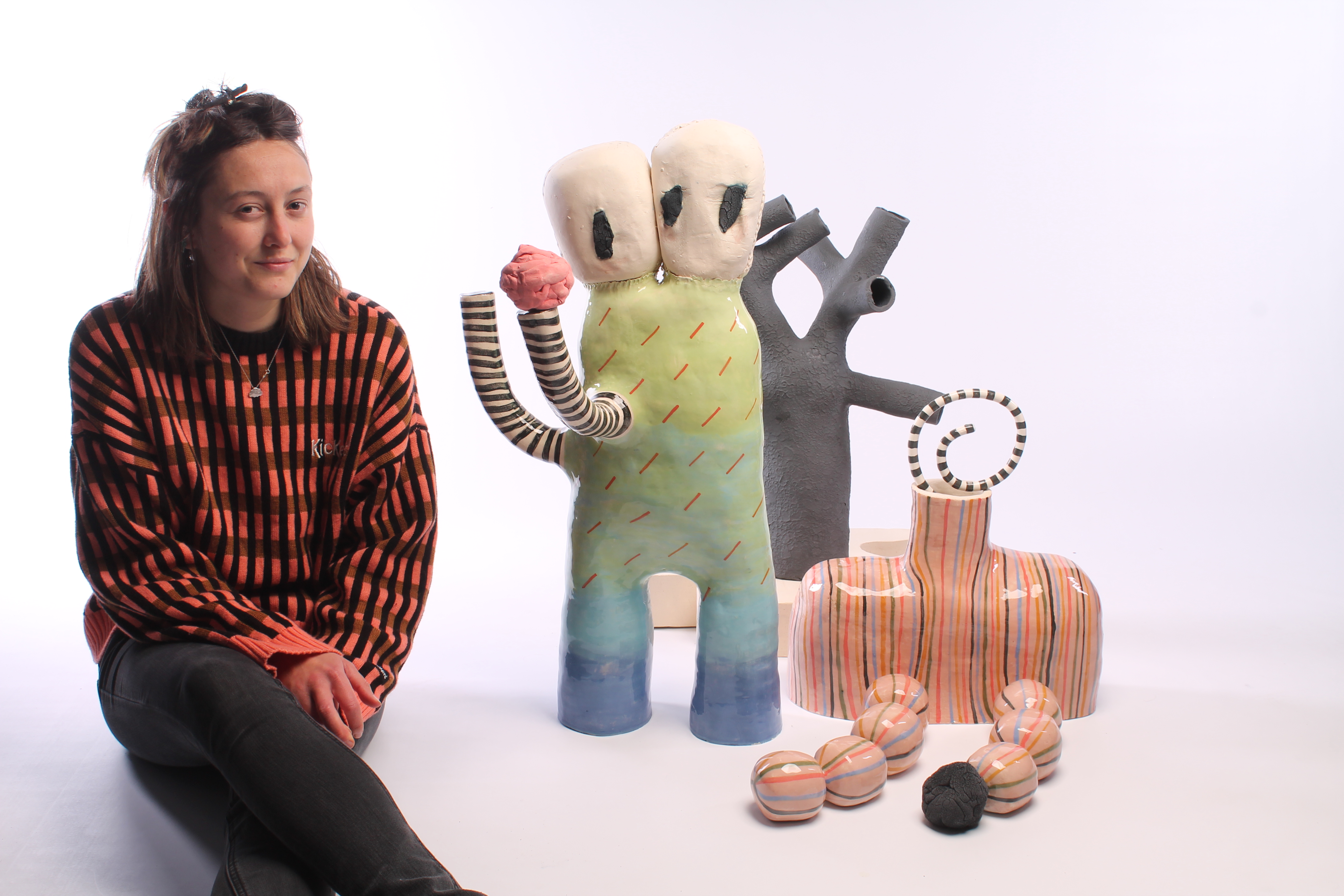2021 AWARD WINNER | Cardiff School of Art & Design
Posted on - 24th August 2021



ROSIE HARMAN
Cardiff School of Art & Design | BA Hons Ceramics
Tell us about yourself, your work, and your career path so far.
I grew up in a boatyard with a family of sailers, unlike my family I prefer to sail in calm sunny weather so I can draw and write, think and observe. A pivotal moment came when I started working for a local potter, helping her set up and run an art gallery. Gradually over time I began working more and more in her pottery studio, at first painting her work and then learning how to throw and make my own vessels before setting up a studio myself. My work derives from my drawings which bring together the real and the imagined. It is frequently painted with coloured slips or contrasting surface qualities. Initially with clay I most enjoyed painting unsuspecting narratives onto functional vessels, since attending university this has stretched to encompass sculpture, installation and stopmotion animations. Across it all is my preoccupation with figures and feelings, colour and pattern, the surreal and the real, with which I hope to connect with audiences, strike resonance and resemblance to memories, emotions and shared experiences.
Describe your first encounter with clay.
I guess playdough? I played with playdough throughout my childhood but in my adult life my main memory of experiencing clay for the first time was during my Art Foundation. A great, albeit loose, tutor whacked down a pound of clay, told me to make it hollow and that was about it. I made a strange object with a striped body, legs at one end and balls at the other: I think I was just getting into Louise Bourgeois’s work at that time.
Why did you choose ceramics?
Seeing my former boss, the potter, earn a living in the arts through pottery encouraged me to explore my artistic style through the medium of clay, but mainly I just really fell for pots. I watched her process from start to finish, with finished being in the hands of a delighted customer.
Although family members had owned handmade ceramics, being surrounded by them and using her 'seconds’ was such an invaluable experience in appreciating the handmade object.
I like the inherent intimacy of pottery, holding a bowl in your hands or a mug to your lips, using them on a daily basis, like a staple of your life - a moment of joy each day. I see pots as functional paintings, and at university this notion has blossomed with images, narratives and patterns stretching out of function and into sculpture. To me clay is the perfect medium because it is flexible, malleable but also has a mind of its own - it does its own thing - particularly during the making process the work is open to change, which I like, it keeps it fresh and exciting, and echoes my play-it-by-ear approach to life.
I also love that there is no waste with clay, the slip I produce from making becomes the slip I mix with colour stains. Everything else is reused.
Where do you find inspiration?
Primarily in the artwork of others - Marlene Dumas, Alice Neel and Francis Bacon’s paintings, fashion designers such as Vivenne Westwood, Alexander McQueen, and the Dover Street market installations, and photographers such as Nan Goldin. As well as great exhibitions, the last and most formative ones being Gillian Lowndes at York Art Gallery, I was inspired by her distortion of the domestic, and Hilla and Bernd Becher’s exhibition at Cardiff Museum of Welsh industrial machinery - the scale and lines blows my mind, especially when displayed in multiples they become abstract-artworks - all similar yet subtly different. In ceramics I frequently return to the work of Betty Woodman for her explosion out of function and into installation, and Carol McNicoll for her mixing of pattern and image. Ron Nagel’s work too for his compositions of colour, form and texture.
I access inspiration through drawing, mixing real life images with abstracted ones from my imagination. Drawing subconsciously helps explore my own feelings about things which certainly feeds into ceramic forms and painted surface. I’m interested in both the intimacy of pottery yet the ground-breaking nature of ceramic art. Across it all I’m majorly preoccupied with a sense of the personal, the high and lows of the lived experience.
What are the tools of your trade that you can’t do without?
Good paintbrushes - a nice thick brush for plastering on block colour and a thin one for the fine detail. A narrow wooden modelling tool, for compressing small details. Coloured stains and mixing them together or finding interesting colour combinations. For non-ceramic works - all sorts of coloured pens, scissors, glue or tape, and scrap material to collage with.
What is a typical day in the studio like?
When I’m making pots for exhibitions its often when I’m short of time so it’s early starts and late nights, with lots of food breaks in-between. At university I was very much a headphones in person - I need a lot of mental space particularly when I’m coming up with ideas. I listen to all sorts of music and podcasts but high energy electronic music is what transports me to another space!
What do the next 12 months have in store for you?
I’ve lots of exhibitions over the summer so I’m working feverishly for now, but come October I will start a year-long residency at Firework Studios in Cardiff, a cooperative studio for ceramic artists. It will be the first year that I’ll be a full-time maker, and it will feel great to have my studio in one place for the whole year - currently I’m living between Cardiff and Essex. I’m looking forward to negotiating my two different practices: functional ware and sculpture, seeing how they fuse, and developing new ideas for both: feeling particularly inspired to make wallworks at the moment.
What advice do you have for those currently studying ceramics in further education?
Rummage the library, look at lots of work which interests you, draw it - draw from it. Go to all the exhibitions and events you can, even if they are incredibly out of the way. Write about why you’re doing things. Experiment and play and don’t worry about the finished thing yet. Find ways of working that feel right and intrinsic to you: for me a pivotal moment came when I accepted that I wasn’t interested in the scientific nature of glaze and firings, and instead wholeheartedly started chasing imagery and narrative. Manage energy not time.

